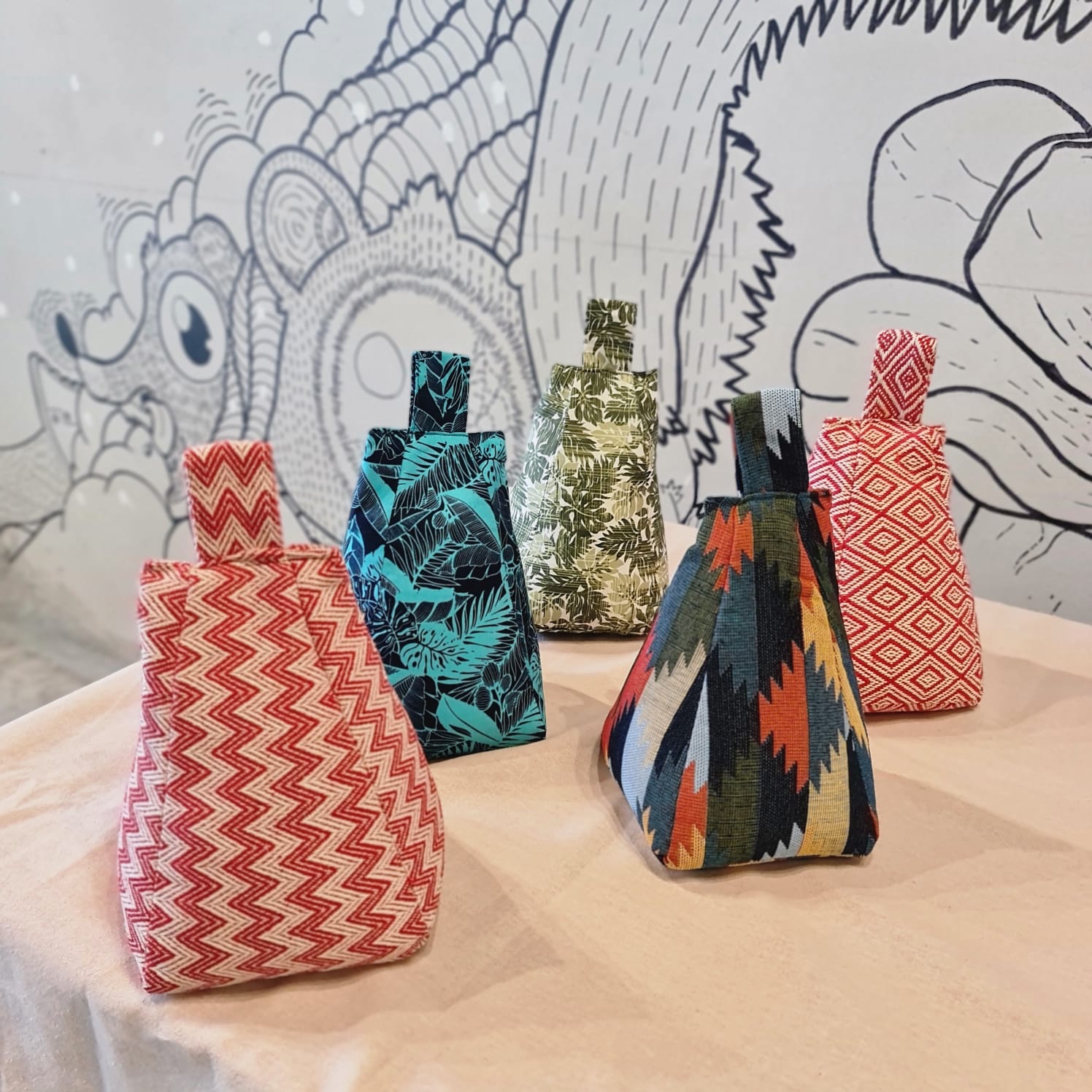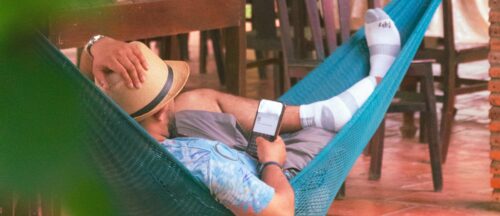Decoding Textiles: How is Clothing Fabric Different from Upholstery Fabric? Your Guide from a ULA Collections Phuket Fabric Store

Stepping into a fabric store in Phuket – whether it’s a bustling local market or a dedicated shop like ULA Collections (Unique Living Arts) – you’re greeted by a world of textures, colors, and patterns. Rows upon rows of beautiful materials invite you to imagine everything from a flowing dress to a sturdy sofa. But while they might share similar fibers or weaves at first glance, not all fabrics are created equal. Specifically, the textile designed to grace your body is fundamentally different from the one meant to cover your furniture.
Understanding the key distinctions between clothing fabric and upholstery fabric is crucial, not just for designers and decorators, but for anyone looking to choose the right material for a project, whether it’s a new outfit, refreshing a beloved chair, or finding quality textiles in Phuket. Using the wrong fabric can lead to discomfort, poor durability, and even safety issues.
In this comprehensive guide from ULA Collections, your trusted fabric store in Phuket, we’ll dive deep into what sets these two major categories of textiles apart. We’ll explore their characteristics, common types, intended uses, and why choosing the right one from a reliable source, perhaps a fabric online store based in Phuket or a local shop, makes all the difference.
What Defines Clothing Fabric? Comfort, Drape, and Wearability
Clothing fabric, often referred to simply as apparel fabric, is designed with the human body and movement in mind. Its primary purpose is to be worn, which dictates its essential characteristics:
- Drape and Flow: Clothing fabrics typically need to hang, fold, or move gracefully. Think of the way a silk dress flows or how cotton drapes. This quality, known as drape, is essential for the aesthetics and comfort of garments.
- Softness and Feel (Hand): Fabrics meant for wear must feel comfortable against the skin. The “hand” of the fabric – how it feels when touched – is a critical factor, ranging from the soft smoothness of satin to the gentle texture of linen or cotton knit.
- Breathability: Many clothing fabrics, especially those made from natural fibers like cotton, linen, and silk, are breathable. This allows air circulation, making garments comfortable to wear, particularly in warmer climates like Phuket.
- Weight: Clothing fabric comes in a vast range of weights, from lightweight sheer chiffons for delicate scarves to heavier denims or wools for jackets and trousers. The weight influences drape, structure, and suitability for different garment types and seasons.
- Flexibility: Fabrics for clothing need to move with the body. They are often woven or knitted in ways that provide flexibility and ease of movement.
- Cleaning: While care instructions vary, many clothing Phuket fabrics are designed to be relatively easy to clean, often allowing for machine washing or simple hand washing.
Common types of clothing fabric you might find include cotton, linen, silk, wool, rayon, viscose, polyester, nylon, spandex, and various blends. Each offers a different combination of drape, feel, breathability, and durability, suitable for everything from everyday wear to high fashion. If you’re searching for quality clothing fabric in Phuket, understanding these properties is key.



What Defines Upholstery Fabric? Durability, Stability, and Resilience
In stark contrast, upholstery fabric is engineered for endurance. Its purpose is to cover furniture – sofas, chairs, ottomans, headboards, and more – which means it must withstand significant wear and tear.
- Durability and Abrasion Resistance: This is the most critical characteristic. Upholstery fabric must resist rubbing, snagging, and tearing from constant use. Abrasion resistance is often measured using standardized tests (like the Martindale or Wyzenbeek tests), providing a numerical indicator of how much wear the fabric can handle before showing significant signs of distress.
- Weight and Stability: Upholstery fabrics are generally much heavier and more densely woven than clothing fabrics. This weight and tight weave provide stability, preventing the fabric from stretching or shifting once applied to furniture. It needs to hold its shape.
- Resistance to Pilling and Fading: Good upholstery fabric is designed to resist pilling (forming small balls of fiber on the surface) and fading from sunlight exposure, crucial for furniture placed near windows, common in homes and businesses throughout Phuket.
- Finishes and Treatments: Many upholstery fabric Phuket options come with special finishes for added functionality. This can include stain resistance, water repellency (especially important for outdoor upholstery), and fire retardancy for safety compliance in commercial settings like hotels or restaurants.
- Cleaning: Cleaning upholstery is typically more involved than cleaning clothes. It often requires spot cleaning, specialized cleaning products, or professional cleaning to avoid damaging the fabric or the furniture beneath.
- Weave Structure: Upholstery fabrics often feature tighter, more complex weaves (like jacquards, tapestries, or heavy plains) that contribute to their strength and durability.
Common types of upholstery fabric include heavy-duty cotton blends, linen blends, synthetic workhorses like polyester, nylon, and acrylic, as well as more luxurious options like velvet, chenille, leather, and vinyl. When looking for upholstery fabric in Phuket, focusing on these durability factors is essential for furniture that will last.

Key Differences Summarized: A Side-by-Side Look
To make the distinction even clearer, let’s summarize the core differences between clothing fabric and upholstery fabric:
- Primary Function: Clothing = To be worn (comfort, aesthetics, movement). Upholstery = To cover furniture (durability, protection, aesthetics).
- Durability: Upholstery is significantly more durable and abrasion-resistant than most clothing fabrics.
- Weight & Density: Upholstery fabrics are typically heavier and more densely woven for stability. Clothing fabrics vary widely but are generally lighter and more flexible.
- Drape: Clothing fabrics are chosen for their drape and flow. Upholstery fabrics are chosen for their stability and ability to hold a taut shape.
- Texture & Hand: Clothing focuses on comfort against the skin (softness). Upholstery focuses on durability and visual appeal (texture, weave).
- Special Finishes: Stain resistance, water repellency, and fire retardancy are far more common and important in upholstery fabrics.
- Cleaning: Clothing is often designed for easier washing. Upholstery requires more specialized or professional cleaning methods.
- Safety: Upholstery in many contexts (especially commercial Phuket businesses like hotels) must meet specific fire safety standards, which is not typically required for clothing fabrics.
Can You Use Them Interchangeably? (Mostly No, And Here’s Why)
Given these fundamental differences, using clothing fabric for upholstery or vice-versa is generally not recommended, and here’s why:
- Clothing Fabric for Upholstery: This is the more problematic swap. Clothing fabric will simply not hold up to the abrasion and tension of being stretched over and sat upon furniture. It will quickly wear out, tear, pill, and fade, leading to disappointment and the need for premature reupholstery. Furthermore, clothing fabrics lack the necessary stability and may sag or lose shape. They also rarely have the fire retardant treatments required for upholstery, posing a safety risk, especially in commercial settings in Phuket.
- Upholstery Fabric for Clothing: While less dangerous, using stiff, heavy upholstery fabric for clothing would be incredibly uncomfortable. It lacks drape and flexibility, making movement restricted. It would also likely be too warm and not breathable, particularly in a tropical climate. The texture might be irritating to the skin, and the sheer weight would make garments feel cumbersome.
There might be rare exceptions with certain heavy-duty clothing fabrics (like canvas or some very heavy linens) used for very low-use decorative upholstery items (like a small, infrequently used stool), or perhaps certain lightweight but durable upholstery-grade linens used for structured outerwear. However, as a general rule, it is best to respect the intended use of each fabric type.

Why Choosing the Right Fabric Matters (Beyond Just Looks)
Selecting the appropriate fabric is about more than just aesthetics. It impacts:
- Durability and Longevity: The right fabric ensures your project lasts, whether it’s a piece of clothing that withstands wear or a sofa that remains beautiful for years.
- Comfort and Functionality: Clothing needs to be comfortable to wear, while upholstery needs to be comfortable to sit on and functional in resisting stains or wear.
- Safety: Particularly important for upholstery in commercial spaces, ensuring fire safety compliance.
- Maintenance: Using the correct fabric simplifies cleaning and care in the long run.
- Value for Money: Investing in the right fabric prevents the need for frequent replacements or repairs.

Why Choosing the Right Fabric Matters (Beyond Just Looks)
Selecting the appropriate fabric is about more than just aesthetics. It impacts:
- Durability and Longevity: The right fabric ensures your project lasts, whether it’s a piece of clothing that withstands wear or a sofa that remains beautiful for years.
- Comfort and Functionality: Clothing needs to be comfortable to wear, while upholstery needs to be comfortable to sit on and functional in resisting stains or wear.
- Safety: Particularly important for upholstery in commercial spaces, ensuring fire safety compliance.
- Maintenance: Using the correct fabric simplifies cleaning and care in the long run.
- Value for Money: Investing in the right fabric prevents the need for frequent replacements or repairs.

Finding Your Perfect Fabric in Phuket: Clothing and Upholstery
Whether you’re a local designer, a business owner fitting out a new space, or a homeowner embarking on a creative project, finding the right Phuket fabric is your first step. And this is where a dedicated fabric store like ULA Collections comes in.
Located in Phuket, ULA Collections understands the unique needs of this tropical environment, offering fabrics that are not only beautiful but also suitable for the climate and lifestyle. We pride ourselves on sourcing and curating a wide selection of both premium clothing fabric and durable upholstery fabric.
- For Your Wardrobe: Explore our collections of clothing fabric in Phuket, featuring beautiful natural fibers, unique patterns (including our own designs!), and comfortable blends perfect for the tropical heat or creating stunning resort wear and everyday apparel.
- For Your Home & Business: Discover our extensive range of upholstery fabric Phuket. We offer materials designed for durability and style, including our popular thick woven fabric, outdoor-friendly options, and fabrics with beneficial features like easy cleaning or pet-friendliness. Whether you’re reupholstering a single chair or fitting out an entire hotel in Phuket, we have the right upholstery fabric for the job.
As a fabric online store based in Phuket and a physical location, we offer convenience and expertise. You can browse our collections online from anywhere or visit our store to see and feel the fabrics in person and get personalized advice. We understand the nuances of textiles and can help you select the perfect Phuket fabric for your specific clothing or upholstery needs.
Beyond just selling fabric, ULA Collections also offers services like custom sewing and reupholstery, demonstrating our expertise in working with both clothing fabric and upholstery fabric to create beautiful, finished products right here in Phuket.
Conclusion: Choose Wisely, Create Beautifully
The world of textiles is rich and varied, with fabrics designed for countless purposes. Understanding the fundamental differences between clothing fabric and upholstery fabric is key to ensuring the success, longevity, and safety of your projects. While their beauty may sometimes seem similar, their construction and performance characteristics are distinctly different.
Don’t settle for using the wrong material. Whether you need flowing clothing fabric in Phuket for a new dress or robust upholstery fabric Phuket for a furniture refresh, choosing the appropriate textile will save you time, money, and disappointment in the long run.
At ULA Collections, your local fabric store in Phuket and fabric online store based in Phuket, we are passionate about helping you find the perfect fabric for any creation. Visit us today to explore our curated collections of high-quality Phuket fabric and let our knowledgeable team assist you in making the best choice for your clothing or upholstery project. Create beautifully with the right fabric!



